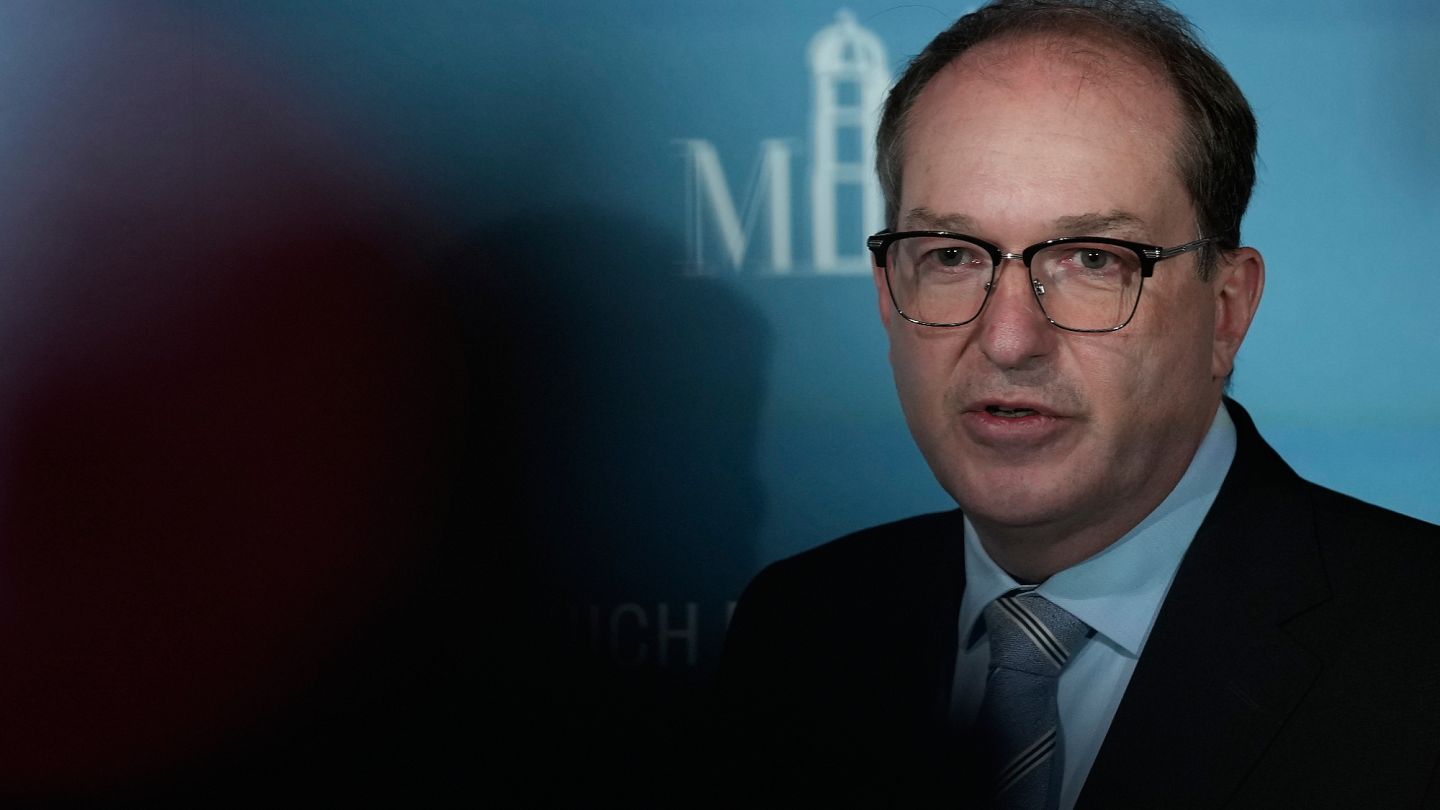Drone sightings overshadow Munich Migration Meeting
Germany's Interior Minister Alexander Dobrindt announced an EU roadmap, in which the EU border protection agency Frontex could play a central role in future.
As the name suggests, migration was supposed to be the central theme of the "Munich Migration Meeting."However, at the press conference after the meeting, Germany's Interior Minister Alexander Dobrindt and the EU Commissioner for Home Affairs and Migration Magnus Brunner made only moderate efforts to keep the topic at the centre of attention.This was because the recent drone sightings over Munich dominated the atmosphere and instead put Europe's security issues centre-stage.Brunner described the current incidents in Germany as attacks in the "heart of Europe". Dobrindt spoke of a "race" and an "arms race" of capabilities in connection with drones.Both emphasised that Europe now needs a coordinated response to the provocations - even if, according to Interior Minister Dobrindt, not every drone sighting poses a direct threat.Dobrindt: Empower - Arm - UniteDobrindt urged a significant expansion of drone defence capabilities. In his speech, he outlined a package of measures that he summarised as: Enable - Arm - Pool.Specifically, Dobrindt called for a specialised drone defence unit within the Federal Police and a dedicated development and research unit to test and further develop technical solutions.The aim, he said, is to better enable civilian security authorities to recognise threats at an early stage and react more effectively by Germany's police.In this context, Dobrindt understands enabling to mean above all the creation of a clear legal framework: Responsibilities, authorisations and control mechanisms must be clearly regulated so that emergency services can act with legal certainty.According to Dobrindt, the point of arming is aimed at equipping the responsible units with suitable technology.By bundling, he meant closer cooperation between security and defence authorities in order to shorten response times and clarify responsibilities.Brunner: Investment - Innovation - IntegrationThis was also emphasised by EU Commissioner Magnus Brunner. In his statement, he spoke of the great importance of a European initiative for drone defence and brought his own three-pronged package into play: Integration - Innovation - Investment.While Dobrindt insisted above all on national powers and equipping the authorities, Brunner summarised the necessary bundling under the keyword of integration.The approach is complemented by innovation: Brunner sees research and funding programmes as the key to developing new defence techniques and quickly putting them into practice. According to the EU Commissioner, Horizon Europe plays a central role here.The programme is the most important EU funding instrument for research and innovation.According to the mid-term review of the multiannual financial framework, the indicative budget for the 2021-2027 period is around 93.5 billion euros.Horizon Europe funds projects on topics such as climate change, the United Nations Sustainable Development Goals and strengthening competitiveness and growth in the EU. At the same time, it facilitates cross-border cooperation and aims to maximise the impact of research in the development and implementation of EU policies.So far, civilian drone technologies have already been funded under such programmes, but military applications have been reserved for the European Defence Fund (EDF).The Commission is now considering softening the strict separation between civilian and military research: The aim is to better utilise synergies and reduce external dependencies, particularly on China, in critical technology sectors.Finally, the focus should also be on investment: more money should be channelled into relevant authorities, Brunner said.Frontex could play role in drone defenceThe EU border protection agency Frontex could play a central role here in future. Brunner hinted that funds from border protection could also be increasingly used for drone defence and surveillance in the future, meaning that Frontex could take on new tasks.The technical strategy for 2023-2027 already deliberately focuses on drones and associated technologies. This is also reflected in the deployment figures: The flight hours reported by Frontex rose from 3,307 (2023) to 4,993 (2024) - an increase of more than 50 per cent.Surveillance flights are mainly carried out with two long-range drones: 2,137 flight hours were flown by one system in Malta and 2,856 by another in Crete.A new framework contract worth 184.2 million euros was concluded for the deployment on Crete in 2024; the existing two-year contract for Malta was extended by a further 75 million euros.EU roadmap for drone defence in sight?The meeting brought little news on the topic of migration: much of what had already been discussed was confirmed, without any surprising announcements.The EU Commissioner responsible and the German delegation stated that they were in agreement on the content.When it comes to drone defence, however, a new pace seems to be emerging: Brunner and Dobrindt announced that the measures would soon be put up for discussion in the Council and that they would jointly develop an EU roadmap for drone reconnaissance and defence.


